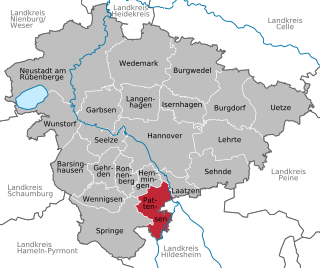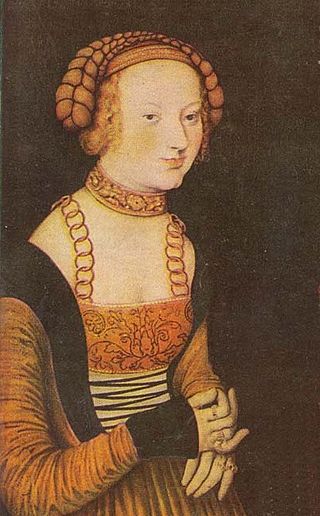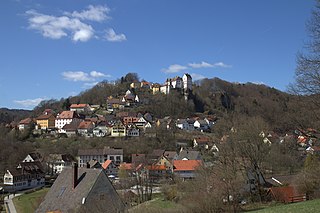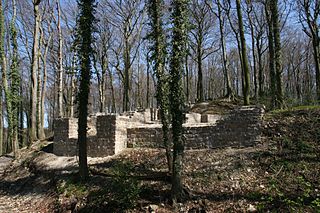
Heidekreis is a district (Landkreis) in Lower Saxony, Germany. It is bounded by the districts of Harburg, Lüneburg, Uelzen, Celle, Hanover, Nienburg, Verden and Rotenburg.
Ernst Gräfenberg was a German-born physician and scientist. He is known for developing the intra-uterine device (IUD), and for his studies of the role of the woman's urethra in orgasm. The G-spot is named after him.

Nienburg is a town and capital of the district Nienburg, in Lower Saxony, Germany.

Peine is a town in Lower Saxony, Germany, capital of the district Peine. It is situated on the river Fuhse and the Mittellandkanal, approximately 25 km (16 mi) west of Braunschweig, and 40 km (25 mi) east of Hanover.

Hitzacker is a town in the Lüchow-Dannenberg district of Lower Saxony, Germany. It is situated on the river Elbe, approx. 8 km north of Dannenberg, and 45 km east of Lüneburg. The 2007 population of Hitzacker was 4,982, and its postal code is 29456. The mayor is Holger Mertins. The town is located on the German Timber-Frame Road and is part of the Samtgemeinde of Elbtalaue.

Herzberg am Harz is a town in the Göttingen district of Lower Saxony, Germany.

Hardegsen is a town in the district of Northeim, in Lower Saxony, Germany. It is situated approximately 15 km southwest of Northeim, and 15 km northwest of Göttingen.

Bodenfelde is a municipality in the district of Northeim, in Lower Saxony, Germany. It is situated on the right bank of the Weser, approx. 35 km north of Kassel, and 30 km northwest of Göttingen at the southwest border of the Solling-Vogler Nature Park.

Stadthagen is the capital of the district of Schaumburg, in Lower Saxony, Germany. It is situated approximately 20 km east of Minden and 40 km west of Hanover. The city consists of the districts Brandenburg, Enzen-Hobbensen, Hörkamp-Langenbruch, Krebshagen, Obernwöhren, Probsthagen, Reinsen and Wendthagen-Ehlen. Earlier, there were also the districts Habichhorst, Bruchhof, Blyinghausen, Enzen and Hobbensen.

Pattensen is a town in the district of Hanover, in Lower Saxony, Germany. It is situated approximately 12 km (7 mi) south of Hanover.

Karl Theodor Richard Lessing was a German Jewish philosopher.

Sidonie of Saxony was a princess of the House of Wettin and by marriage Duchess of Brunswick-Lüneburg and Princess of Calenberg-Göttingen.

Hans Joachim Schliep is a German Lutheran theologian, pastor and author. From 1990 to 1999 he was director of the Amt für Gemeindedienst, and by May 2000 the commissioner for the environment of the Church of Hanover and the Confederation of Protestant Churches in Lower Saxony. From 1999 to 2008 Schliep was the first pastor at the Kronsberg Church Centre and founder of the congregation at the Expo-neighbourhood in Kronsberg, Hanover, Lower Saxony, Germany.
Andreas Gotzmann is a German historian of Judaism and scholar of religion. He holds the Chair for Jewish Studies and Religious Studies at the University of Erfurt.

The so-called Iburg Castle, is a castle and former Benedictine abbey in Bad Iburg, Germany.

Egloffstein Castle is a former high mediaeval, aristocratic castle, that stands immediately west of the eponymous village of Egloffstein in the Upper Franconian county of Forchheim in the German state of Bavaria.

The Holter Burg is the oldest castle site in the municipality of Bissendorf near Osnabrück in the German state of Lower Saxony. It is the ruin of a hill castle. It was the third hill castle in Osnabrück Land along with the Iburg and the Wittekindsburg near Rulle.
Waldemar R. Röhrbein was a German historian. He worked as a museum director in Lower Saxony, his last post being from 1976 to 1997 at the Historisches Museum Hannover, and was president of the Homeland Federation of Lower Sachsony. He contributed to encyclopedias about Hanover's history and culture.
Hermann Ostfeld, was a German rabbi as well as a criminologist, psychotherapist and judicial official in Israel. In 1951 he changed his name to Zvi Hermon,
The history of the Jews in Hannover began in the 13th century. In 2009, about 6200 people belonged to the four Jewish communities in Hannover.






















